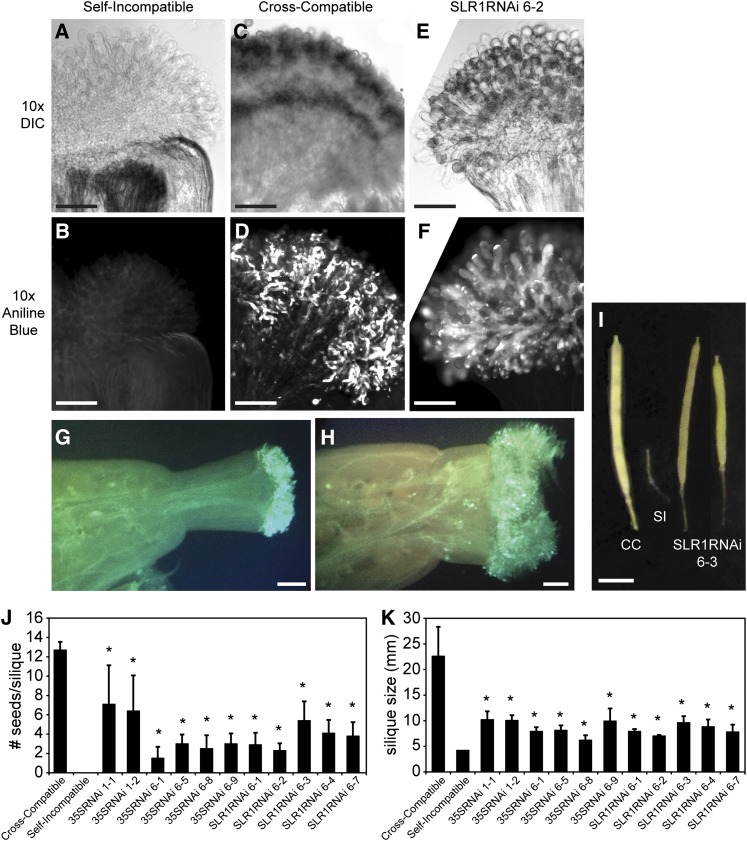Figure 6.
Pollen Tube Growth and Seed Set in the Transgenic ARC1 RNAi A. lyrata Lines.
(A) to (F) Pollen grain attachment and pollen tube growth in A. lyrata stigmas from control self-incompatible cross ([A] and [B]), control cross-compatible cross ([C] and [D]), and SLR1RNAi 6-2 self-pollination ([E] and [F]). After pollination, pistils were stained with aniline blue to visualize the pollen tubes. DIC, differential interference contrast. Bars = 0.1 mm.
(G) and (H) Pollen tube growth in A. lyrata pistils from control cross-compatible cross (G) and SLR1RNAi 6-2 self-pollination (H). After pollination, pistils were stained with aniline blue to visualize the pollen tubes. Bars = 2 mm.
(I) Siliques from cross- and self-pollinated pistils. Wild-type cross-compatible (CC) pollinations result in a large silique while self-incompatible (SI) crosses result in a small undeveloped silique. Siliques from a self-pollinated SLR1RNAi 6-3 plant were much larger and developed. Bar = 5 mm
(J) Average number of seeds per silique following cross- and self-pollinations. All the transgenic ARC1 RNAi A. lyrata lines produced significant increases in the number of seeds/silique when compared with wild-type self-incompatible crosses (t test, P < 0.05). n = 10. Error bars indicate ± se.
(K) Average silique sizes following cross- and self-pollinations. All the transgenic ARC1 RNAi A. lyrata lines produced significant increases in silique lengths when compared with siliques from wild-type self-incompatible crosses (t test, P < 0.05). n = 10. Error bars indicate ± se.

